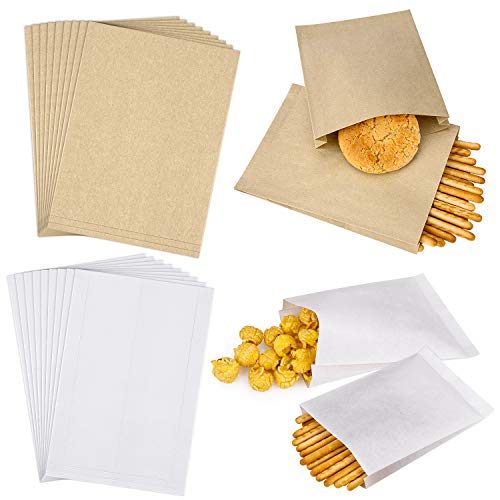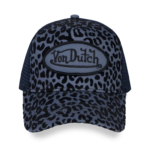In the ever-evolving landscape of sustainable packaging, wax paper bags are emerging as a game-changer. These versatile and eco-friendly bags are capturing the attention of consumers and businesses alike, offering a unique blend of functionality, aesthetics, and environmental responsibility. As the world grapples with the pressing need to reduce plastic waste, wax paper bags are leading the charge towards a greener future.
A Brief History of Wax Paper
Wax paper bags, also known as paraffin paper, has a long history dating back to the 19th century. Originally used for wrapping food items to keep them fresh, wax paper became popular for its ability to provide a moisture-resistant barrier. The application of wax, typically paraffin or soybean-based, to paper creates a non-stick surface that protects contents from moisture and air. This simple yet effective technology laid the groundwork for the modern wax paper bags we see today.
The Environmental Benefits
One of the most compelling reasons for the growing popularity of wax paper bags is their environmental impact. Unlike plastic bags, which can take hundreds of years to decompose, wax paper bags are biodegradable and compostable. They break down naturally, reducing the burden on landfills and minimizing environmental pollution. Furthermore, many wax paper bags are made from recycled materials, enhancing their eco-friendly credentials.
In an era where consumers are increasingly conscious of their environmental footprint, the demand for sustainable packaging solutions is skyrocketing. Wax paper bags fit perfectly into this trend, offering a viable alternative to single-use plastics. By choosing wax paper bags, businesses can demonstrate their commitment to sustainability, attracting eco-conscious customers and enhancing their brand reputation.
Versatility and Practicality
Wax paper bags are incredibly versatile, making them suitable for a wide range of applications. In the food industry, they are used to package everything from sandwiches and baked goods to fresh produce and deli items. The wax coating provides a moisture barrier, keeping food items fresh and preventing grease or oil from seeping through. This makes wax paper bags an ideal choice for delis, bakeries, and take-out restaurants.
Beyond the food industry, wax paper bags are gaining traction in other sectors as well. Retailers are using them to package clothing, accessories, and gifts, capitalizing on their rustic and natural appearance. The bags can be easily customized with logos and designs, providing a unique and eco-friendly branding opportunity. Additionally, their sturdy construction and durability make them suitable for carrying a variety of items, from small trinkets to heavier goods.
If you want to know more about custom cone sleeve visit topusapackaging
The Aesthetic Appeal
In addition to their practicality, wax paper bags boast a distinct aesthetic appeal. Their natural, slightly translucent appearance exudes a sense of simplicity and authenticity. This minimalist charm resonates with consumers who appreciate the beauty of sustainable and artisanal products. Businesses can leverage this aesthetic appeal to create a memorable unboxing experience, enhancing customer satisfaction and loyalty.
Moreover, the tactile sensation of wax paper adds an extra layer of sensory engagement. The smooth, slightly waxy texture is pleasing to the touch, creating a more enjoyable and memorable interaction for consumers. This sensory element can elevate the overall perception of a brand, making it stand out in a crowded marketplace.
Customization and Branding
One of the key advantages of wax paper bags is their adaptability to customization. Businesses can easily print their logos, slogans, and designs on the bags, creating a cohesive and branded packaging solution. Customization not only enhances brand visibility but also reinforces a company’s commitment to sustainability. Eco-friendly packaging adorned with a company’s branding can leave a lasting impression on consumers, fostering brand loyalty and advocacy.
The customization options extend beyond printing. Wax paper bags can be produced in various sizes, shapes, and colors, allowing businesses to tailor them to their specific needs. This flexibility makes wax paper bags a versatile choice for a wide range of industries, from food and retail to hospitality and beyond.
Challenges and Future Prospects
While wax paper bags offer numerous benefits, there are challenges to consider. The production of wax paper involves the use of paraffin, a petroleum byproduct, which raises concerns about its sustainability. However, the industry is making strides towards using more environmentally friendly alternatives, such as soybean-based wax. These innovations are paving the way for even greener solutions, ensuring that wax paper bags continue to evolve and meet the highest sustainability standards.
Another challenge is the cost. Wax paper bags are generally more expensive to produce than plastic bags, which can be a barrier for some businesses. However, as demand for sustainable packaging increases and production processes become more efficient, the cost is expected to decrease. Moreover, the long-term benefits of using eco-friendly packaging, such as improved brand reputation and customer loyalty, can outweigh the initial investment.
Looking ahead, the future of wax paper bags appears promising. With growing awareness of environmental issues and a strong consumer preference for sustainable products, the demand for wax paper bags is set to rise. Innovations in materials and production techniques will further enhance their eco-friendly credentials, making them an even more attractive choice for businesses and consumers alike.
Conclusion
Wax paper bags are more than just a packaging solution; they represent a shift towards a more sustainable and responsible way of living. Their environmental benefits, versatility, aesthetic appeal, and customization options make them a compelling choice for businesses looking to reduce their environmental footprint and connect with eco-conscious consumers. As we move towards a greener future, wax paper bags will undoubtedly play a crucial role in the sustainable packaging revolution.



